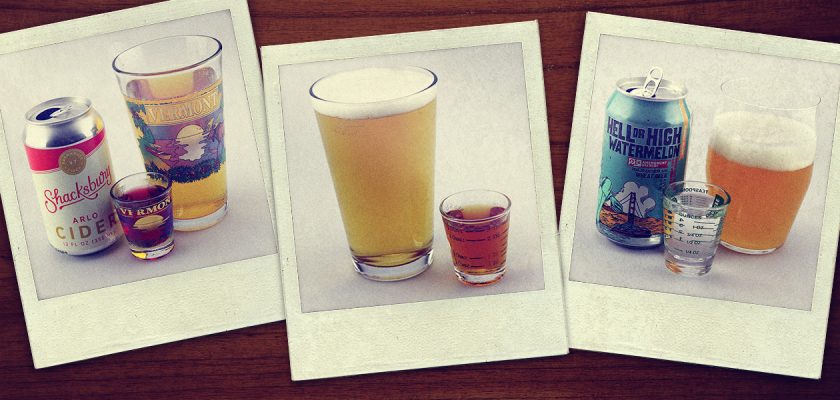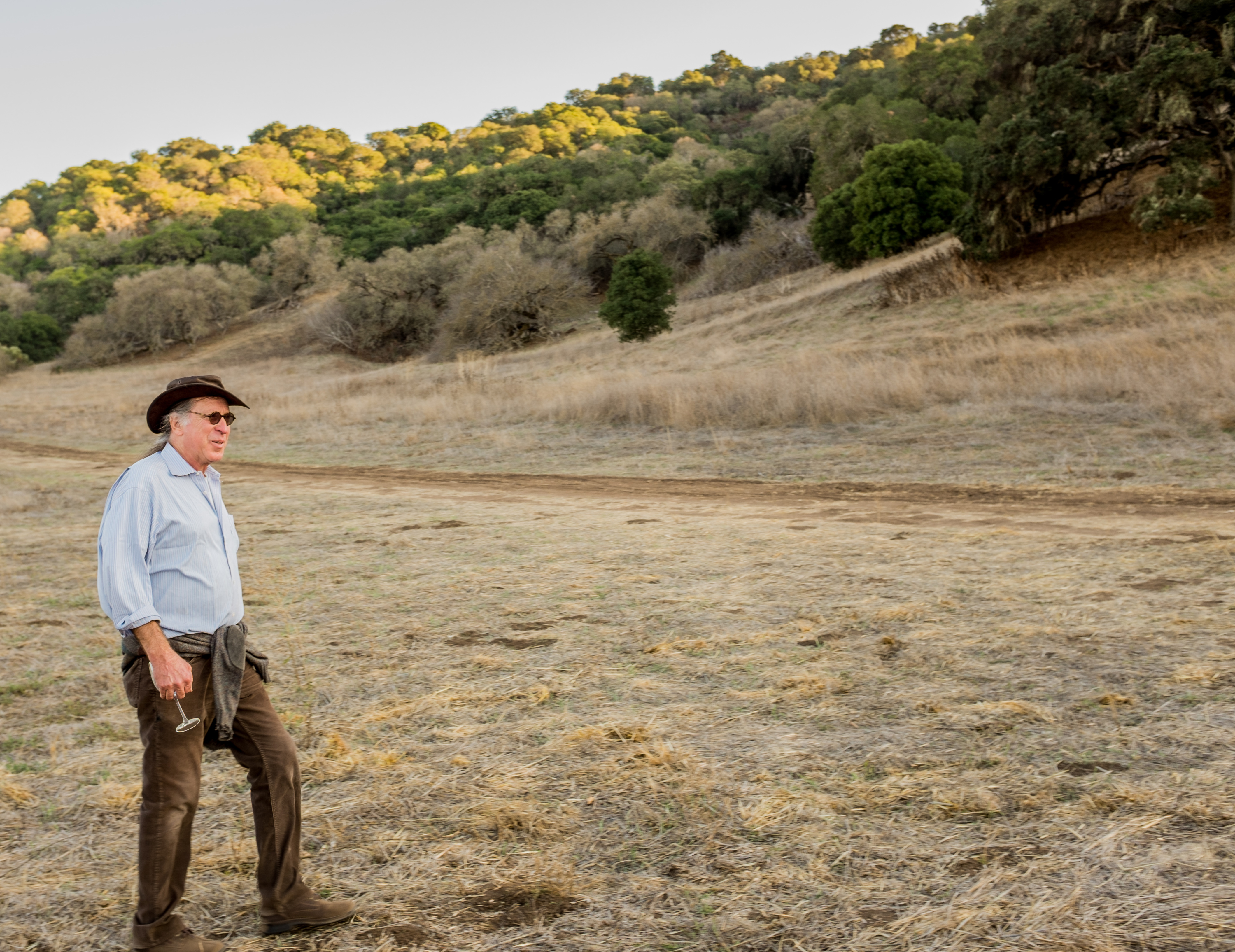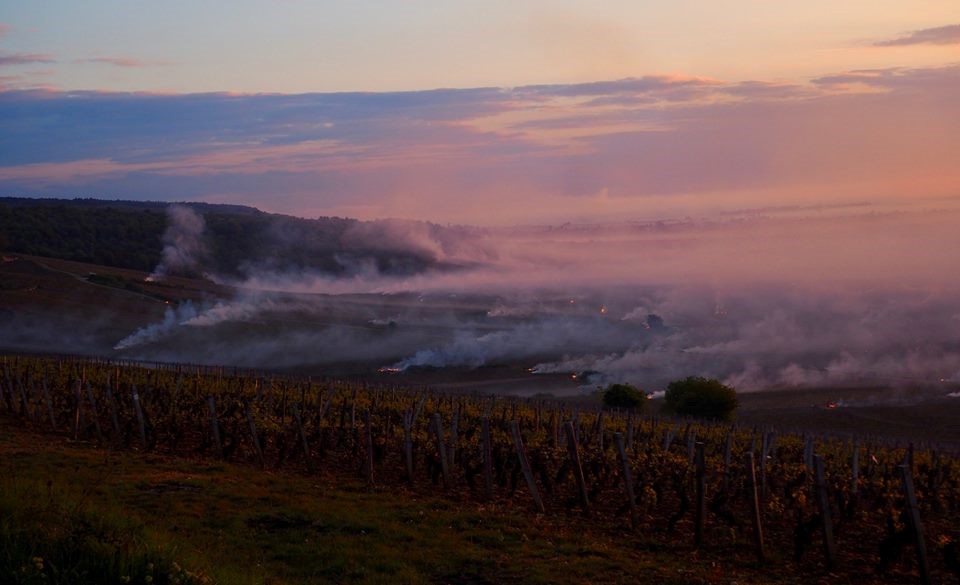Time to get real.
Here at Skurnik Wines & Spirits, we may well be among the geekiest booze nerds around, sure – but sometimes, let’s face it, all we really want is a shot and a beer.
Admitting that, however, we are also forced to admit – we can even get creative with that particularly pedestrian combo. Despite its seeming humility, a glass of beer and a dram of liquor can be an exceedingly interesting, and often an underappreciated experience.
Have you ever heard of a boilermaker?
OK, you probably have, but let us push your envelopes a little. In early preparation for the heat of summer to hit, this will be the first in a series of Boilermaker posts we’ll be publishing for posterity, and trust us – with a little imagination, you’ll see this is just the tip of the iceberg.
In case you actually aren’t familiar with the notion of a boilermaker, first let us say: what a shame. Second let us explain the idea. Though it’s as full of tiny local variations as any simple mixed drink, a boilermaker retains one simple equation in its recipe; it’s a shot and a beer. Go some places and the beer is a short pour, used as a chaser for the shot. Go elsewhere and the shot is dropped into a full pint of ale. Still other environs insist upon cider in place of the usual cerveza. The twists are endless, but the idea is the same. Sometimes we need a refreshing drink; sometimes, that drink needs a little extra effort to better take the edge off our day.
We’ll delve into the history of the boilermaker on a future posting; for today, let’s look at some of the more flavorful variations which have sprung up over the years, easy alterations of the simplest “mixology” concept of them all.
The Utica Boilermaker
Let’s start with a classic American take on this recipe: no mixing, no blending, no complex flavors, no pretense. The boilermaker is ostensibly named for a hardworking craftsman, a 19th Century evolution of the blacksmith, who made complex steel fabrications like — *ahem* — boilers. In keeping with this ethos of effort, a basic boilermaker drink gets a lot done without a lot of hoopla; the simple combination of a shot of whiskey and a glass of beer seems as obvious and generic as it is successful and sublime. Most of us could hardly want for more.
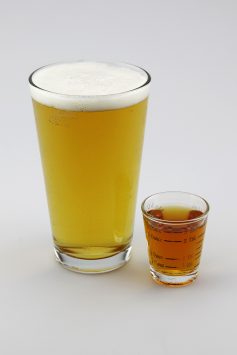
These days, the name “boilermaker” also has a unique home in Utica, NY, where a historic 15k road race by the same name is held annually. Much like the industrial history of the drink, this “boilermaker” has its starting line at a 1928 boiler factory from the Utica Radiator Company; but the finish line is hosted by Matt Brewing Company, complete with endless cups of their local lager, Utica Cup beer, for every runner who makes it home. But what about the shot to accompany? We’ll fix that. American whiskey, of course, is the name of the game these days; nothing could feel quite so appropriate with an industrious lager as a nip of bourbon. We recommend a classic American pairing — Medley Brothers, one of Kentucky’s oldest distilling families, with Utica Club, one of New York State’s oldest regional beers – for our inaugural boilermaker pairing.
Utica Club beer is a pale lager, and the first beer officially sold after Prohibition. Medley Bros is a Kentucky institution, bottled at 102-proof with a high-corn, low-rye mash bill that hasn’t changed since the family started bottling their bourbons in 1875.
Biere Amer
As we’ll discuss next time, part of the boilermaker’s origins lies in the British “shandy” – generally a mixture of ginger or lemon, soda and beer. Adding citrus and spices to the simple lager brought delicious depth and complexity, and the shandy is itself enjoying a revival on modern bar menus.
Across the water from the United Kingdom, French tipplers weren’t about to let themselves be outdone. On the contrary, they devised an improvement upon the relatively mild shandy’s recipe. Amer, the historic French liqueur, is widely seen in the States as a cousin to amaro, and so a digestive spirit with herbal emphasis. However, at home in France it is associated both with bitter herbs and roots as it has orange and ginger flavors, and is most commonly consumed as a drop shot (or bomb) deposited into a glass of pale French lager (think Kronenbourg 1664). It’s easy to see this as a nuanced, Franco take on the classic boilermaker template; the lager’s gentle hues are given weight and spice by bitter barks and soft citrus. Biere Amer is not uncommon on French menus, and some bars will devote space to an array of beer and amer shot pairings, not unlike what we’ve done today in this very article.
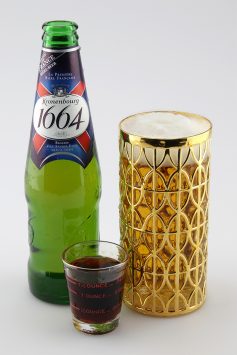
About as classic as it gets, Bigallet Amer China-China has hardly changed its formula since the late 19th Century, remaining one of the few French amer to still hit as hard with both bitter spice and higher proof (it’s 40% alcohol, while most of today’s amer are less than half as strong).
Besides being an essential component to recreating the original 19th Century version of the classic Brooklyn cocktail – and for sure, a lovely digestif in its own right – the China-China makes for an amazing boilermaker.
Try dropping an ounce and a half into a simple European lager – the effect is transportive, with crisp clean hops bouncing off dry quinine and soft orange essences. A perfect example, if ever there was one.
Suicider
The combination of bitter liqueur in low-ABV beer is not uniquely French, though. Think of the Italian spritz, the Americano, the Spagliano – these are almost like boilermakers for bubbly, right? But mixed drink makers in the US have stumbled upon something even better.
Riffing on both the classic Spritz and the historically American Stone Fence cocktail (which we’ll save for next time – check back in with us), American bartenders have recently begun to popularize a simple but insanely refreshing boilermaker combination of Italian aperitif-bitter (think Contratto Bitter) and hard apple cider. Once referred to as a Red Light Special, the popular contemporary name is a “suicider” – so named because of the drink’s easy quaffability and deceptively strong impact. If you do it right, the stuff tastes like apple juice and tonic, but hits like a ton of bricks.
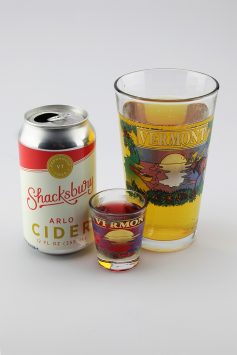
To that end, a note on technique: you don’t want those flabby British pub style ciders, or the candied American ciders of 1990s fame. Neither do you want anything too dry, shockingly tart, or driven by yeast. While a sweet English cider will wind up flat and bland in this recipe, an assertive Basque cider will wind up chewing out the inside of your mouth with the first sip, which is even more challenging than it sounds.
Rather, aim for something both slightly sweet and distinctly tart – something that straddles that balance. For this purpose, we strongly recommend Vermont’s own Shacksbury Semi-Dry; if you prefer your aperitif boilermaker on the bracing tonic side, take it one step further and try it with Shacksbury’s Arlo single-varietal cider.
The combination of Contratto Bitter’s gentian root and the crisp angularity of these New England apples give tangible meaning to the moniker: these are addictive, deceptive and yes, a bit dangerous. You’ve been warned.
To Kayak in Reykjavik
Now let’s get funky.
The previous three have been classic boilermakers, or shot-and-beer combos, if particularly refined iterations of the concept. But the thing is, with today’s wildly creative beer-brewing community and our own access to an increasingly inspiring array of spirits, our boilermakers are only limited by our imagination. It is stifling to think that the best we can do with this category of drink is to retread decades old footsteps – to pair whiskey and beer has been done, and we do no one any services by mixing the concept up with a Mexican lager and a shot of tequila. We know this territory – it can be perfect, it can be just what we need, but it will not inspire, challenge or excite our imagination the way a truly unique pairing can.
So what else can we do?
We’ve been playing around with this shot-and-beer idea for a while; we’ve got some good ones for you (be sure you check out the next installment, too). The possibilities are endless.
A recent favorite seems to bridge the gap between the cold northern temperatures we’re still feeling at spring, and the hot summer months in store as summer approaches. Suggested by our friends at Quarter + Glory in Washington, this boilermaker is a nearly perfect re-imagining of the classic concept.
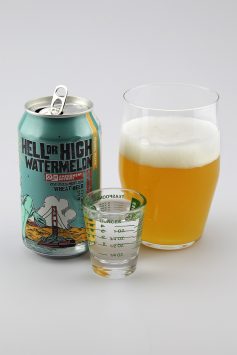
San Francisco, CA brewery 21st Amendment makes a stellar summer quaffer, called “Hell or High Watermelon” – an ale brewed with, you guessed it, watermelon. We like to pair ours with caraway.
Since a good summer cooler should be secretly stiff, we like to use a full 2 ounces of Brennivin Aquavit in our Watermelon Boilermaker, pairing it with 21st Amendment Brewing’s “Hell or High Watermelon” summer ale. The result is like the best watermelon salad you’ve never had, but in a glass and made of booze. Since 21st Amendment only sells their brews in 12 ounce cans, the ratio of aquavit to beer is high, and the spicy caraway notes Brennivin champions ride proud on waves of cooling watermelon. The beer implies a sweetness it never delivers, thankfully, and the savory notes of the Icelandic spirit make this the best meal-friendly boilermaker we’ve tried yet; everything from tacos to curry to the ultimate summer jam, a barbecue in the park, seems to be enhanced by this match made in heaven. Thanks, Kenneth!
Burro Boilermaker
Not for the faint of heart, we have one more to offer in this initial installment of high-low-ABV, high-low-brow boozing. The creation of this combination was one of those moments where everyone involved could hardly believe they hadn’t tried it before; it’s also addictively delicious, leading to one of those moments where everyone involved also wished they hadn’t tried it at all.
One of the nefarious joys of spicy foods is how they seem to trick us into desiring more. After a particularly spicy bite of salsa, often our instinct is to reach for another chip to shovel more into our mouth, somehow craving that initial cooling it will bring – but perhaps secretly hoping for the prolonged and invigorating agony of the flames inside our mouths.
This drink is no different.
Agave distillates love to be infused with hot peppers, and not just because it suits the cuisine from whence they came. Both tequila and mezcal carry a pronounced vegetal note, not unlike fresh grass, herbs and bell peppers. The sweet, soft pepper tones are kicked into overdrive with a simple infusion; you can probably guess where this is headed.
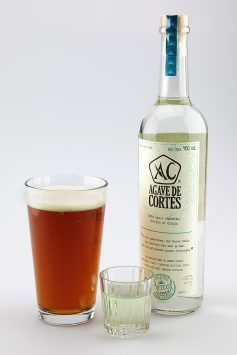
We can’t pretend any longer: sometimes, we like to infuse mezcal and tequila with jalapenos. You’ll probably love it, too.
Try the following instructions out with either Agave de Cortes Joven Mezcal, or else Azteca Azul Silver Tequila.
Our favorite method for making jalapeno tequila or mezcal is to chop up 6 or 7 peppers (depending on size) into small, 1/2” wheels and steep them in the mezcal for about 6 hours. Start tasting your infusion around 4 hours in, just to be sure you pull the peppers out when the spice level is where you want it. If you pull early, you’ll wind up with a gentler, sweet pepper accent with a lingering heat behind it. If you pull late, you’ll wind up with a bitter, scalding aggressor who’s come to devour your soul from the inside out. Aim for pulling your peppers out early, if you bend in either direction. Just a bit of advice.
Craft beers, again, allow us to experiment with more complex flavor pairings than we previously could have expected – but some of the biggest surprises come from underappreciated old styles of beer. Try dropping a shot of your freshly made jalapeno mezcal (or tequila) in a pint of brown ale (we recommend Sixpoint for this pairing). The results are astounding – a perfect rendition of chipotle peppers in beverage form, a meditation on the charred landscapes of the Rio Grande and the Gowanus Canal, a spicy pepper that demands the meal it accompanies rise to the delicious standard it has set.
If you like a little heat, and you only make one of our boilermakers we’ve offered today, let it be this one. When you drop that shot of pepper and agave in a cold pint of brown ale, something magical happens and suddenly the room around surges with electricity and the deep red hues of the Southwest – it’s seriously a wild experience.
Report back and let us know how your journey was.
See you next time…




